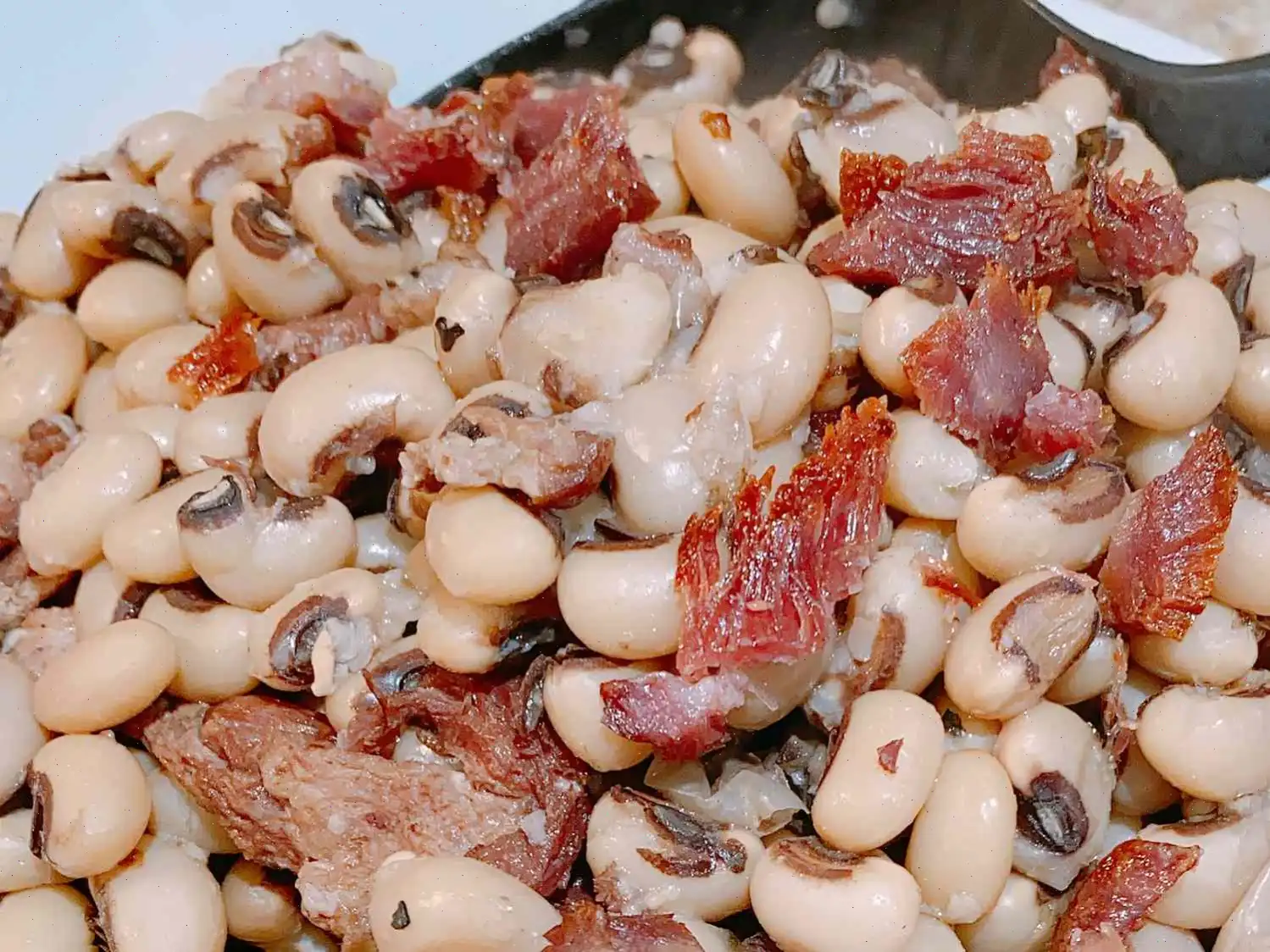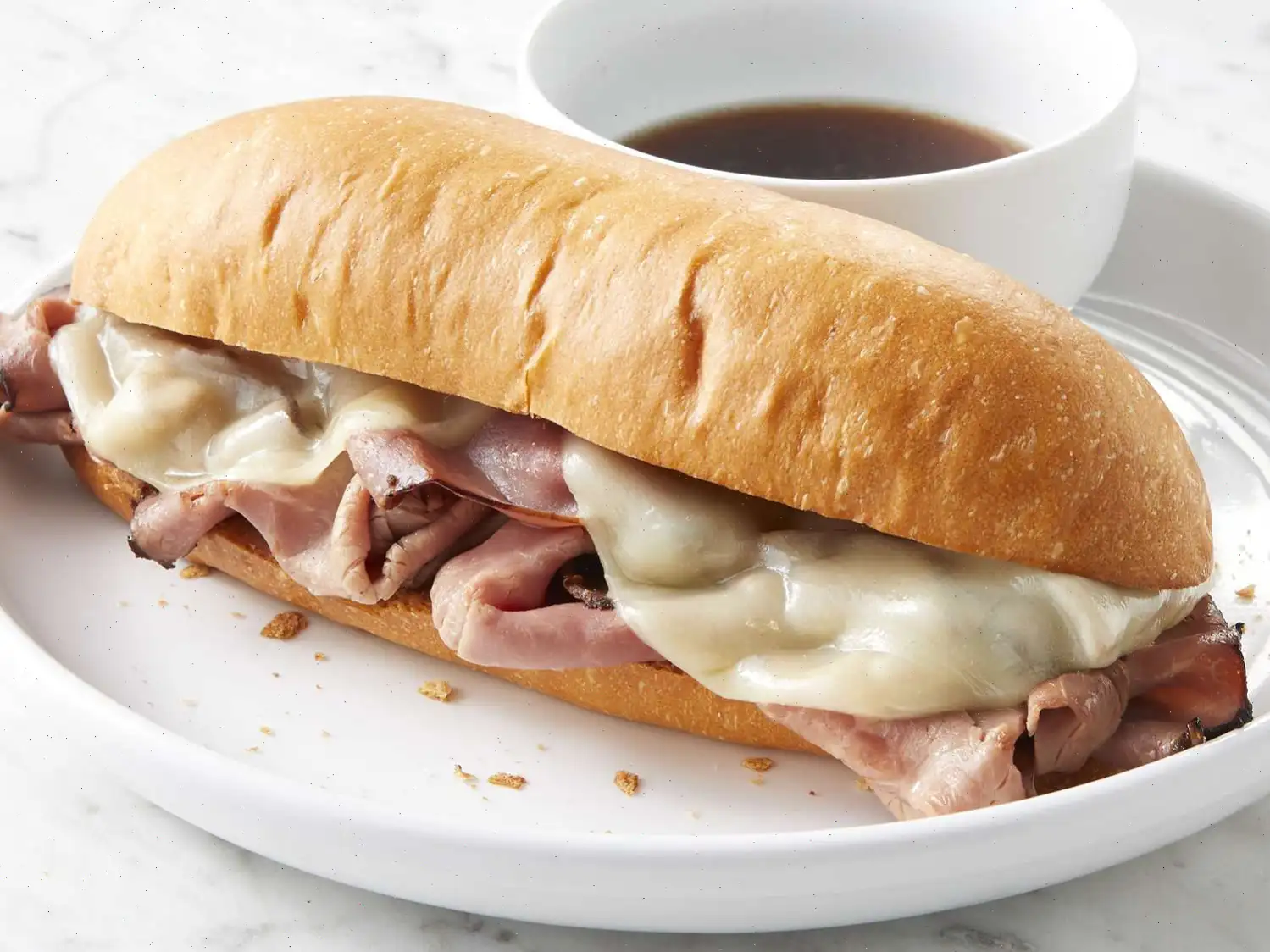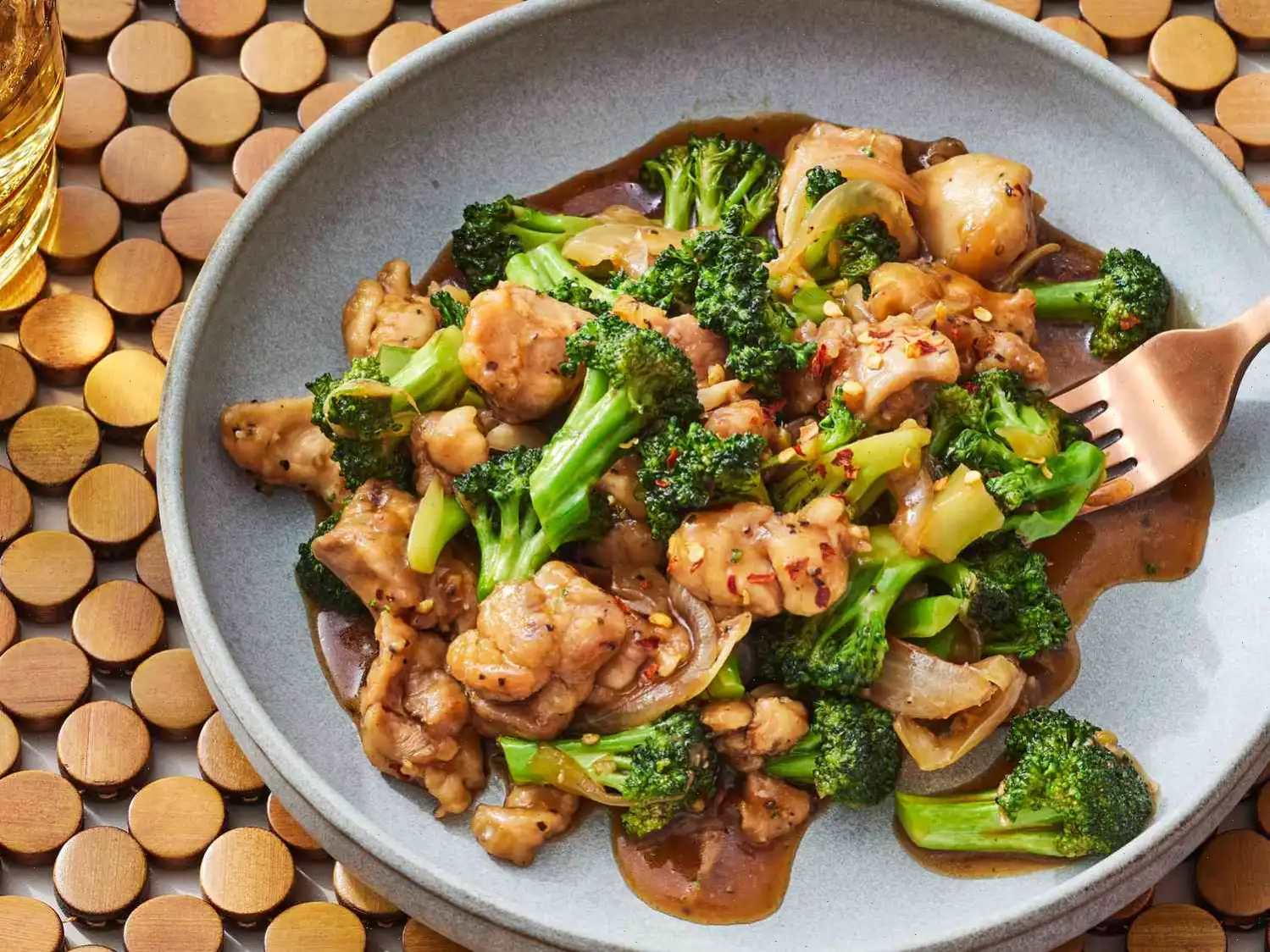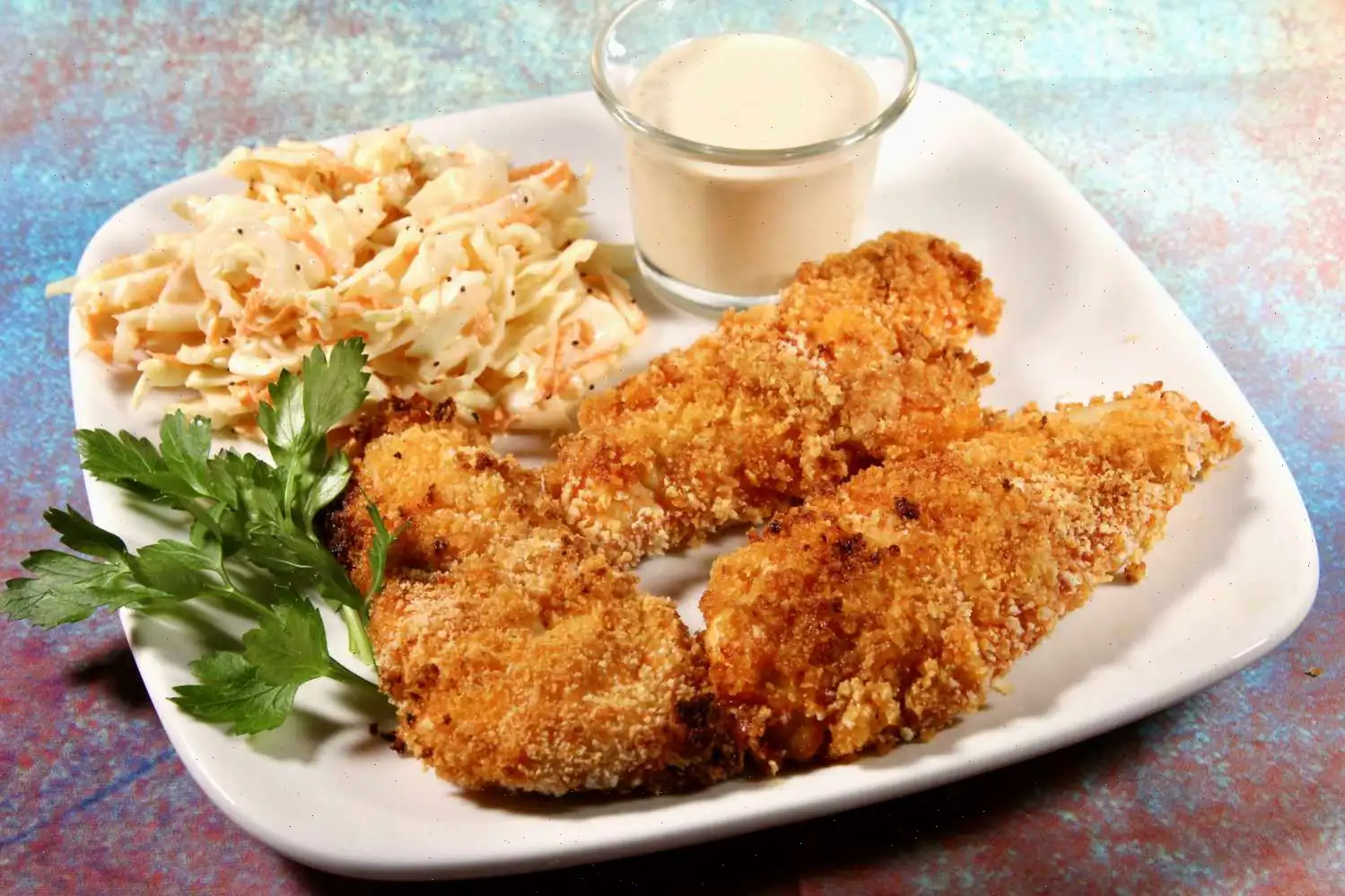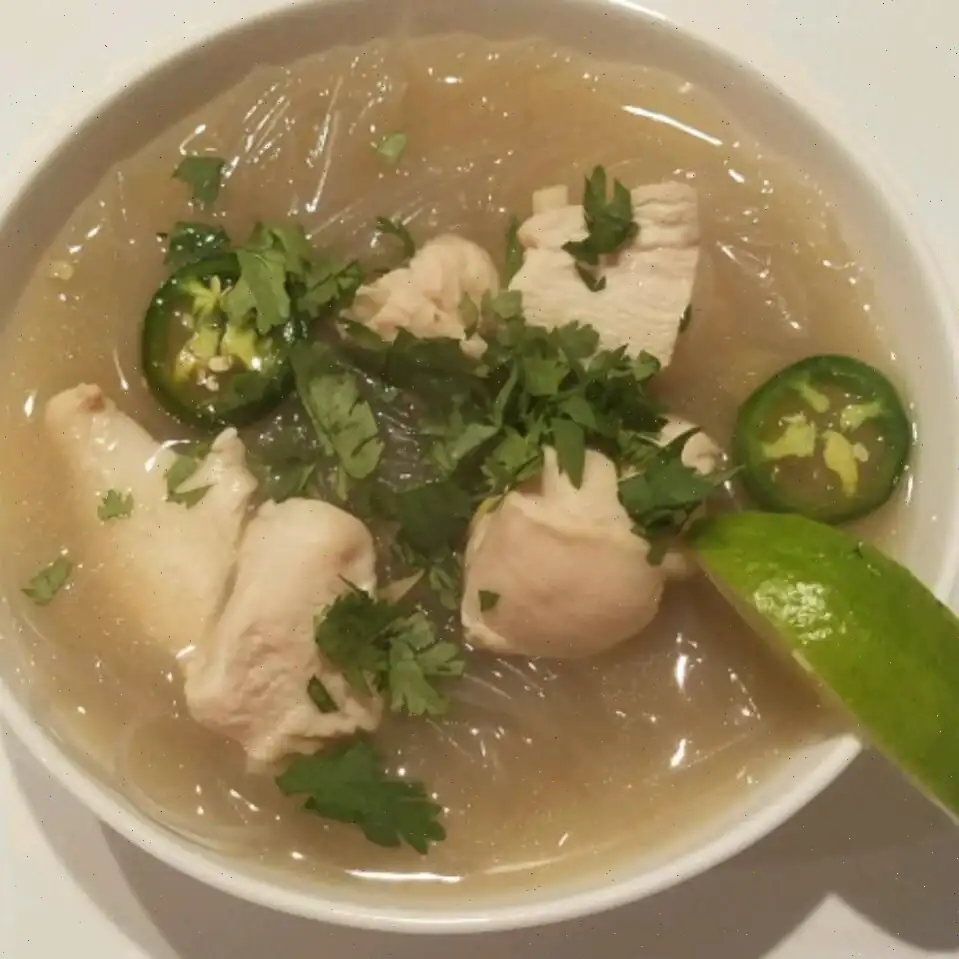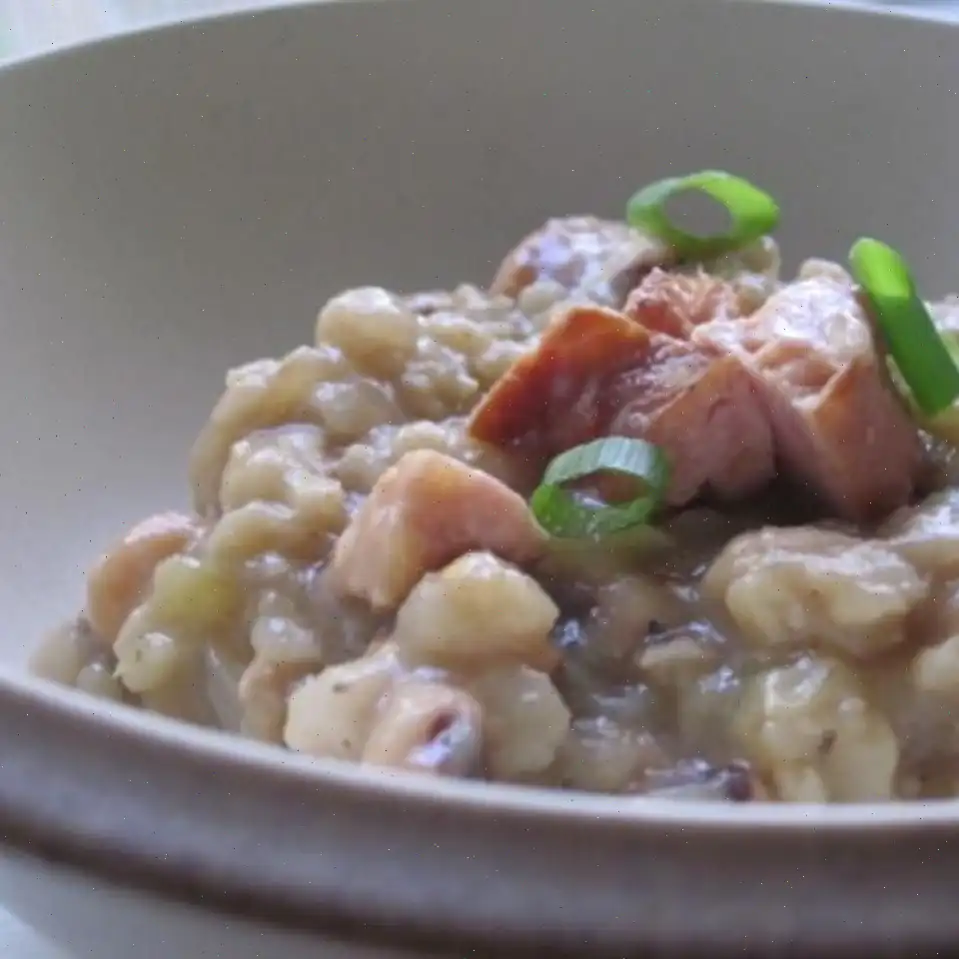
Instant Pot Black-Eyed Peas Recipe
Ingredients
- 1 pound bacon, cut into 1-inch pieces
- 3 cloves garlic, minced
- 1 pound dry black-eyed peas
- 1 cup water
- 5 cups chicken broth
- 1 teaspoon garlic powder
- 1/2 teaspoon dried oregano
- 1/4 teaspoon dried dill
- 1/2 teaspoon freshly cracked black pepper, or to taste
Directions
Step 1: Rinse the black-eyed peas thoroughly and set them aside for later use.
Step 2: Turn on your multi-functional pressure cooker (such as an Instant Pot) and select the "Saute" function. Add the bacon pieces and cook, stirring occasionally, until the bacon is evenly browned and crispy, about 10 minutes.
Step 3: Add the minced garlic to the pot and cook for an additional minute, until the garlic becomes fragrant.
Step 4: Stir in the rinsed black-eyed peas, water, and chicken broth. Mix everything together to combine evenly.
Step 5: Press "Cancel" to stop the saute function. Close and lock the lid of the pressure cooker. Set the cooker to high pressure according to the manufacturer's instructions and set the timer for 30 minutes.
Step 6: Wait for the pressure to build, which will take about 10 to 15 minutes. Once the cooking time is complete, allow the pressure to release naturally, which can take anywhere from 10 to 40 minutes, depending on the model of your cooker.
Step 7: Once the pressure has been released, carefully remove the lid. Add garlic powder, oregano, dill, and freshly cracked black pepper to the cooked peas. Stir gently to fluff the mixture.
Step 8: Serve immediately and enjoy!
Nutrition Facts (per serving)
| Nutrient | Amount | % Daily Value* |
|---|---|---|
| Calories | 469 | |
| Total Fat | 21g | 27% |
| Saturated Fat | 7g | 35% |
| Cholesterol | 59mg | 20% |
| Sodium | 1543mg | 67% |
| Total Carbohydrate | 37g | 13% |
| Dietary Fiber | 6g | 22% |
| Total Sugars | 5g | |
| Protein | 34g | 67% |
| Vitamin C | 1mg | 1% |
| Calcium | 81mg | 6% |
| Iron | 5mg | 30% |
| Potassium | 955mg | 20% |
* Percent Daily Values are based on a 2,000 calorie diet. Your daily values may be higher or lower depending on your calorie needs.
The Story Behind Black-Eyed Peas
Black-eyed peas have a long and storied history, tracing back thousands of years to Africa, where they were cultivated as a staple crop for their resilience and high protein content. They were brought to the Americas during the transatlantic slave trade and became particularly popular in the Southern United States. Traditionally, black-eyed peas are considered a symbol of luck and prosperity, especially when served on New Years Day, a custom believed to have originated among Southern African-American communities.
Regional Variations and Unique Twists
In the Southern United States, black-eyed peas are often cooked with smoked meats, such as bacon, ham hocks, or sausages, and seasoned with onions, garlic, and a variety of herbs. In contrast, Caribbean versions may include coconut milk, scotch bonnet peppers, and allspice for a sweeter and spicier flavor profile. The use of the Instant Pot in modern recipes streamlines the traditional slow-cooking method, allowing for tender, flavorful peas in a fraction of the time without losing authenticity.
What Sets Them Apart From Similar Dishes
While black-eyed peas are legumes like kidney beans or chickpeas, they are uniquely creamy yet firm when cooked, with a slightly earthy flavor. Unlike baked beans or chili, which are heavily tomato-based, black-eyed peas rely on the richness of their cooking liquid and smoked meats for depth. Their signature eye gives them a distinctive appearance, making them easily recognizable and a favorite for both visual appeal and texture in dishes.
Where Youll Typically Find Black-Eyed Peas
Black-eyed peas are commonly served in Southern homes as a side dish with cornbread, collard greens, or rice. They are also a highlight of celebratory meals, especially during New Year festivities. Restaurants specializing in Southern or soul food often feature black-eyed peas as a hearty accompaniment, sometimes transformed into soups, stews, or even salads. Their versatility makes them suitable for both casual family dinners and festive gatherings.
Interesting Facts and Cultural Tidbits
- Eating black-eyed peas on New Years Day is believed to bring good luck and financial prosperity throughout the year.
- They are rich in fiber, protein, and essential minerals, making them a nutritious option for vegetarian or plant-forward diets.
- The phrase peas for pennies comes from the historic association of black-eyed peas with frugality and survival in tough times.
- Black-eyed peas can be sprouted for use in salads or sandwiches, showcasing their versatility beyond traditional cooking.
- The Instant Pot has modernized their preparation, reducing traditional soaking and long simmering times to just under an hour, without compromising flavor.
FAQ about Instant Pot Black-Eyed Peas Recipe
Comments
Brenda Brown
01/06/2024 10:41:59 AM
Decent, but there was too much liquid. I plan to adjust next time by using 2-3 cups of stock and only 1 cup of water.


